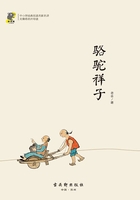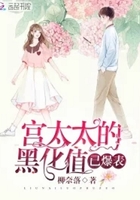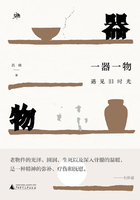The sole purpose of taking food is to make blood, and the great thing to remember is that the food can only be converted into blood after it has been dissolved or digested. This work of digestion commences in the mouth.
The mouth is provided with a double row of teeth, which act the part of a mill in crushing and breaking up the food. While this crushing work is going on, a fluid called saliva oozes out from the lining membrane of the mouth, and moistens the food. This saliva is a thin, watery fluid, which has the power of changing starch into sugar.
Starch, you remember, is one of the most important constituents of all plants. Our vegetable foods-such as bread, beans, peas, rice, potatoes-owe their value in a great measure to the starch which they contain. Nevertheless, it is a strange thing that the starch itself is absolutely useless as food until it has been acted upon by the saliva in the mouth.
Our lesson on the repairing work of the blood taught us that all food, which is to be of any service, must be dissolved, as only dissolved substances can pass byosmosis through a membrane, and so reach the blood. The starchy parts of our food, therefore, being insoluble, could not in that form be of any value. The saliva acts upon the insoluble starch, and changes it into sugar, which is soluble. It is the sugar itself, in a dissolved state, which is taken into the blood, and all starch reaches the blood in this way. So then the starchy portions of our food are being digested as we chew them, and hence we may see the necessity for due care and deliberation at our meals. Never eat in a hurry, but allow ample time for the flow of sufficient saliva to properly moisten the food so that it may be well masticated before it is swallowed. Food swallowed in great lumps can be of no use except to give pain. When the work of mastication is completed the food is swallowed, and passes down into the gullet. The lower extremity of the gullet expands into a large bag or pouch, shaped something like a bagpipe. This is the stomach. It lies across the upper front part of the abdomen, immediately below the diaphragm. The diaphragm itself is pierced with a hole to allow the gullet to pass through and join the stomach. This bag or pouch is very strong and muscular, and is constantly contracting and expanding in such a way as to cause whatever is in it to be rolled and churned about from side to side.
The inside of the bag is crowded with multitudes of tiny tubes, which are constantly pouring out into the bag itself a peculiar fluid-the gastric juice. From three tofour quarts of this fluid are poured into the stomach of an adult in the course of the twenty-four hours.
It is plain that the object of this large quantity ofgastric juice, and also of the constant churning process, is to continue the work whichwas begun in the mouth. The gastric juice, like the saliva, acts as a solvent for the food, or, at all events, for some of it. It will not dissolve starch- food, and it will not dissolvefat. It acts upon lean meat, and upon those parts of the bread, pudding, peas, beans, and such things which the saliva will not dissolve. Inother words, gastric juice is the solvent for all protein matters in the food.
The mass of food in the stomach then contains the starchy matters that have been acted upon by saliva, and the protein matters which the gastric juice has dissolved. Both these are ready to pass into the blood.
The inner lining of the stomach is a close network of blood-vessels, which branch out into the finest of capillary tubes, and in these tubes the blood is always coursing along, while just outside their thin walls is the great cavity of the stomach filled with food, some of which is digested and in a state of solution.
You know that when two liquids are separated by a thin membrane, they pass readily through it by osmosis. Thus it happens that osmosis does the rest of the work in the stomach. Those portions of the food which are dissolved pass into the blood by osmosis through the delicate walls of the capillaries.
The lower end of the stomach leads out through a somewhat narrow pipe into the intestines or bowels. These form a long tube, which, if stretched out, would measure between five and six times the length of the whole person. They are divided into two distinct portions, the small and the large intestines.
That part of the bowel which joins the stomach is known as the small intestine. The tube is about five-sixths of the entire length, and is folded and doubled many times upon itself. The large intestines begin where the small intestines end, in the groin near the right hip. The tubethen passes up the right side, crossing the abdomen just below the stomach, and then turns downwards again, finally opening externally at the lower extremity of the trunk.
Near the junction of the small intestine with the stomach lies a great organ, the liver, which has important work to do in connection with digestion. It prepares a greenish-yellow, slimy-looking fluid-the bile-and pours it into this part of the small intestines. This bile is analkaline fluid, and has the power of dissolving fatty, oily matters.
The same opening which admits the bile into the intestine also admits another little tube from an organ called the pancreas. This tube brings a fluid, known as the pancreatic juice, which resembles in its properties both the saliva and the gastric juice.
Now let us see what all this has to do with the work of digestion. The whole of the food is not dissolved in the stomach. All that remains in an undigested state passes out into the small intestine. There it receives bile from the liver, to dissolve the fats, and pancreatic juice from the pancreas, to complete the work of digesting or dissolving. The walls of the intestines are strong and muscular, and as they contract, they force the stream of food onward, the fluids dissolving it as it goes.















